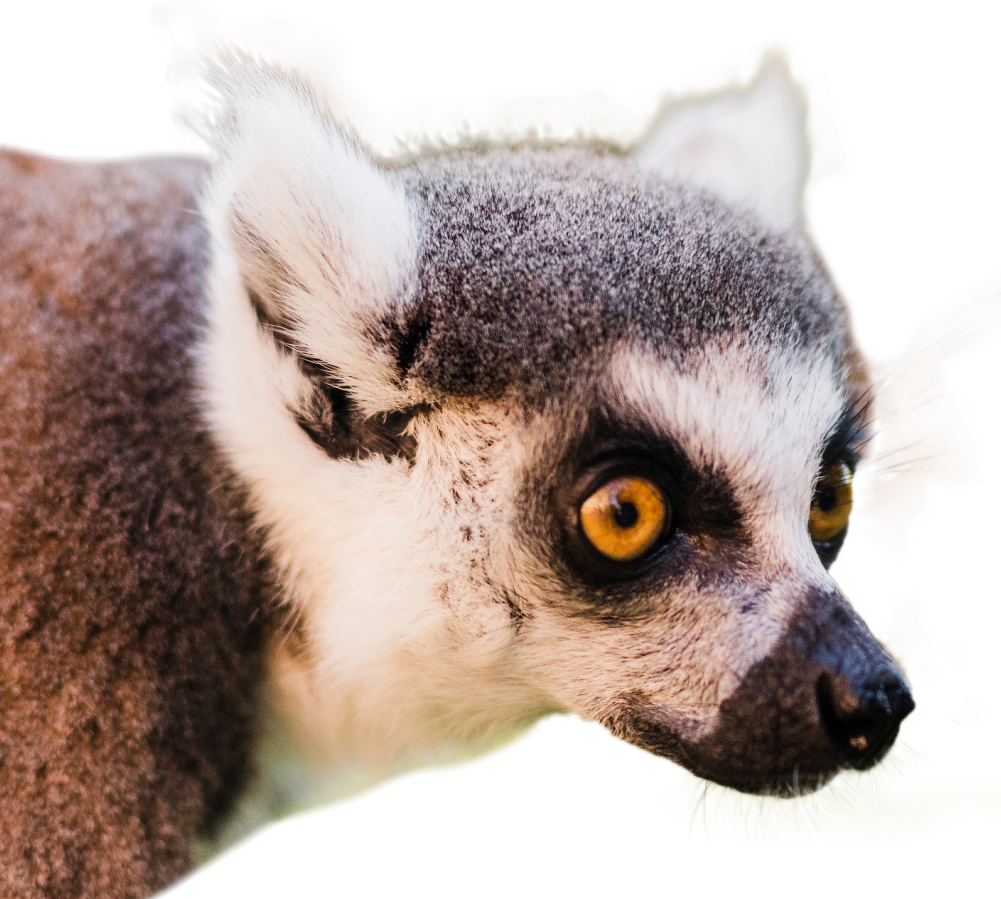The Fascinating World of Lemurs: A Guide to Madagascar's Endemic Primates

The Fascinating World of Lemurs: A Guide to Madagascar's Endemic Primates
"Discover the fascinating world of lemurs - unique primates with a rich history on the island of Madagascar, and a crucial role to play in preserving our planet's biodiversity."
Introduction
Lemurs come in a wide variety of shapes and sizes, from the tiny Madame Berthe's mouse lemur, which weighs less than an ounce, to the large indri, which can weigh up to 20 pounds. They have distinctive physical features, such as large eyes, long snouts, and tails that can be longer than their bodies. Many species of lemurs are highly arboreal, meaning that they live in trees, and have evolved specialized adaptations for climbing and leaping through the forest canopy.
Lemurs are highly social animals that live in a variety of different social groups, from solitary to highly gregarious. In general, lemurs use a variety of vocalizations, facial expressions, and body postures to communicate with each other and maintain social bonds. Many species of lemurs also exhibit a wide range of behaviours, such as grooming, play, and territorial defence.
Lemurs have a diverse diet that varies depending on their species and habitat. Most lemurs are frugivores, meaning that they eat mostly fruit, but many also consume leaves, flowers, nectar, bark, and insects. Some lemurs, such as the aye-aye, are specialized feeders that use unique feeding strategies to locate and capture food.
Lemurs are found exclusively on the island of Madagascar, where they occupy a wide range of different habitats, from rainforests to deserts. Because of Madagascar's high level of endemism and biodiversity, the country is considered a global biodiversity hotspot. Unfortunately, many species of lemurs are currently threatened with extinction due to habitat loss, hunting, and other factors. However, there are many conservation efforts underway to protect these animals and their habitats, and with continued effort, it may be possible to ensure the survival of these amazing creatures for future generations.
In conclusion, lemurs are a unique and fascinating group of primates that have evolved many unique and unusual characteristics as a result of their isolation on the island of Madagascar. With over 100 different species, lemurs represent a diverse and important component of Madagascar's biodiversity, and play important ecological roles within their habitats. However, many species of lemurs are currently threatened with extinction, and it is important that we work to protect these amazing creatures and their habitats for future generations.

History
Behaviour
Diet
Habitat
Conservation
Interesting facts
- The smallest lemur is the Madame Berthe's mouse lemur, which weighs less than an ounce.
- The largest lemur is the indri, which can weigh up to 20 pounds.
- The aye-aye is one of the most unusual lemurs, with its long, thin fingers and distinctive feeding strategy.
- Some species of lemurs, such as the ring-tailed lemur, are highly gregarious and live in large groups of up to 30 individuals.
- Many species of lemurs are highly endangered, with some estimates suggesting that as many as 90% of lemur species could be lost within the next 20 years.
Here are some additional details about lemurs that may be of interest:
Lemurs have a unique social structure:Unlike many other primates, lemurs have a matriarchal social structure, meaning that females are dominant and males typically disperse to other groups when they reach sexual maturity. This social structure is thought to have evolved as a way for females to protect their offspring from male aggression.
Lemurs have a diverse diet:Lemurs are known for their diverse and sometimes unusual diets. For example, the aye-aye lemur is known for its unique feeding strategy, which involves using its long, thin fingers to tap on trees and locate insect larvae hiding inside. Other lemurs eat fruit, leaves, flowers, or even bark and wood.
Lemurs have a unique mode of locomotion:Many lemurs are arboreal, meaning that they live in trees and are adapted for climbing and jumping. However, some lemurs also walk or run along the ground, and others are adapted for vertical clinging and leaping. This diversity of locomotion strategies is thought to have evolved in response to the varied habitats that lemurs inhabit.
Lemurs are important seed dispersers:As frugivores (fruit eaters), lemurs play an important role in dispersing the seeds of the plants they eat. By ingesting fruit and then excreting the seeds in their faces, lemurs help to spread these seeds throughout their habitat and promote the growth and diversity of plant species.
Lemurs have been used in biomedical research:Because lemurs are so closely related to humans, they have been used in biomedical research to study various aspects of physiology, behaviour, and disease. However, this use of lemurs has been controversial, and many conservation organizations advocate for the protection of lemurs from laboratory use.
Lemurs have cultural significance for the people of Madagascar: For many Malagasy people, lemurs are considered sacred or taboo animals that are associated with ancestral spirits or forest deities. These cultural beliefs have helped to promote the conservation of lemurs and their habitats in some areas of Madagascar.
Overall, lemurs are a fascinating and unique group of primates that continue to reveal new insights into the evolution and ecology of life on Earth. Despite their many challenges and threats, lemurs remain an important symbol of Madagascar's biodiversity and cultural heritage.